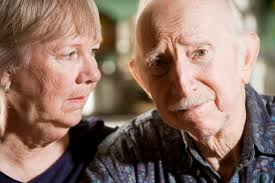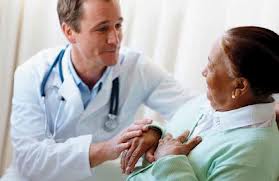 In our continuing series focusing on health and wellness for older adults and the elderly, Part 4 discusses how you can promote better health for eyes, ears, teeth and skin. As noted in previous blog articles in this series, your body goes through a normal process of changes that affect your physical, mental and emotional make-up. Scheduling annual medical and dental exams is very important.
In our continuing series focusing on health and wellness for older adults and the elderly, Part 4 discusses how you can promote better health for eyes, ears, teeth and skin. As noted in previous blog articles in this series, your body goes through a normal process of changes that affect your physical, mental and emotional make-up. Scheduling annual medical and dental exams is very important.
MY EYES AND EARS
What to expect: EYES: Older adults as they age may experience difficulty focusing on objects that are close. Sensitivity to glare and properly adapting to various levels of light increases with age. This can particularly lead to falling and fall-related injuries in and around the home. Clouded vision from the aging process can diminish the eye’s lens and can lead to cataracts. EARS: The elderly can normally experience a “dimming” of hearing. Difficulty hearing high frequencies, phone conversations, following a conversation in a crowded room are such examples.
What you can do about it: Schedule an Annual Wellness Appointment with your primary physician is essential to maintaining optimal vision and hearing. Consult with your physician to review, manage and modify existing glassware, contact lenses, hearing aids and other corrective or assistive devices. We recommend our First Response Annual Wellness Appointment checklist to provide you with the proper guidance and checklist tools prior to visiting your physician. We also advise wearing wrap-around sunglasses and a wide brimmed hat when you are outdoors.
MY TEETH
What to expect: As you age, gums tend to recede from the teeth. Medications that treat allergies, asthma, high cholesterol and high blood pressure can cause an increase in “dry mouth” which leads to tooth decay and infection.
What you can do about it: Better oral health begins with brushing teeth at least twice a day. Combine with the use of regular, over the counter dental floss and/or an inter-dental cleaner applied at least once or twice a day, as well. Make sure to schedule an annual (every six months is better) oral dental exam and cleaning with your dentist or dental hygienist.
MY SKIN
What to expect: Thinning of the skin layers produces less elasticity and makes the outer skin layer more fragile. Older adults commonly experience a decreased production of natural oils thus making the skin drier in feel and appearance. Other common conditions include wrinkles, age spots and skin tags (small growths that protrude from the skin) and can be treated and modified in various ways by skin care and dermatology specialists. Older adults will also bruise more readily as they age.
What you can do about it: Schedule an annual appointment with your primary physician and/or dermatologist for ongoing review and management of your skin and related skin conditions. To promote healthy skin, start with this regimen:
- Bathe in warm, tepid water- not hot, steaming water. Use a mild soap and a moisturizer (facial and body).
- Use sunscreen and wear protective clothing when outdoors.
- Check your skin over the entire body and report any changes or emerging skin conditions/disorders to your physician immediately.
- If you smoke or ingest other related tobacco products, consult with your physician to start a plan or treatment to quit. Smoking promotes skin damage and wrinkling.
As always, we encourage all seniors to consult with a physician and/or health care professional regarding personal health conditions, nutritional, dietary and exercise programs. We also advise to obtain and complete our First Response Personal Emergency Medical Data Form in the event of a medical emergency at home or outside.
To read more of this 5 part blog series, please click on the following links and go to: Part 1 (MY CARDIOVASCULAR SYSTEM; MY BLADDER & URINARY TRACT); Part 2 (MY DIGESTIVE SYSTEM); Part 3 (MY BONES, JOINTS AND MUSCLES); and Part 5 (MY MEMORY; MY SEXUALITY).









 In our continuing series focusing on health and wellness for older adults and the elderly, Part 3 discusses how you can promote positive bone, joint and muscle health as you age in place. As noted in previous blog articles in this series, your body goes through a normal process of changes that affect your physical, mental and emotional make-up. Bones, joints and muscles are particularly prone to weakening in strength as we age, so maintaining a daily regimen that promotes good health is essential to preventing future injuies associated with the aging process.
In our continuing series focusing on health and wellness for older adults and the elderly, Part 3 discusses how you can promote positive bone, joint and muscle health as you age in place. As noted in previous blog articles in this series, your body goes through a normal process of changes that affect your physical, mental and emotional make-up. Bones, joints and muscles are particularly prone to weakening in strength as we age, so maintaining a daily regimen that promotes good health is essential to preventing future injuies associated with the aging process.


 As you continue to age, your body goes through a normal process of change that will affect your physical, mental and emotional make-up. The following information will outline what is considered the normal process of aging, what to expect and what you can do to maintain good health.
As you continue to age, your body goes through a normal process of change that will affect your physical, mental and emotional make-up. The following information will outline what is considered the normal process of aging, what to expect and what you can do to maintain good health.
 Vitamin D deficiency is when the level of vitamin D in the body is too low and can result in the loss or deterioration of the body’s bone density- causing bones to become too brittle and thin. This can lead to serious
Vitamin D deficiency is when the level of vitamin D in the body is too low and can result in the loss or deterioration of the body’s bone density- causing bones to become too brittle and thin. This can lead to serious  “I am very uneasy and have had many falls after my surgery. Ordering the First Response system was easy and I even set it up myself. I have had to use my alert button a few times so far. My daughter has even been contacted after I had taken a few falls. My First Response system has worked great each time I’ve needed it!”
“I am very uneasy and have had many falls after my surgery. Ordering the First Response system was easy and I even set it up myself. I have had to use my alert button a few times so far. My daughter has even been contacted after I had taken a few falls. My First Response system has worked great each time I’ve needed it!”